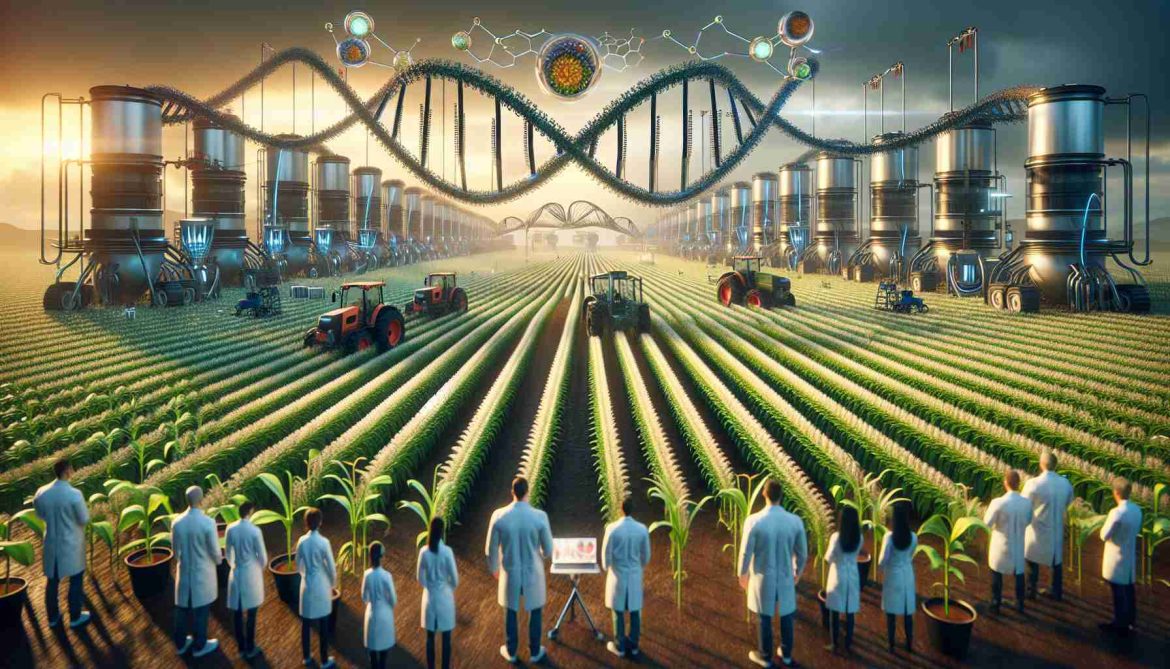## Overview of Agricultural Biotechnology Dynamics
The agricultural biotechnology sector is on a transformative path, with its market currently valued at an impressive USD 120.93 billion as of 2023. Forecasts indicate that this figure could soar to approximately USD 203.26 billion by 2030, marking a remarkable 7.7% annual growth rate. This growth is propelled by cutting-edge advances in genetic engineering and an increasing preference for sustainable farming methods.
This field leverages a variety of techniques, from age-old breeding methods to modern genetic modifications, aimed at producing more resilient and robust crops that can withstand pests, diseases, and harsh environmental conditions. The global rise in genetically modified (GM) crops has been a crucial factor, as these crops can enhance nutritional value, improve processing attributes, and better survive changing climates.
Regional Developments Across Asia
Countries like Vietnam are making strides in using genetic engineering to enhance agricultural productivity, focusing on high-yield and pest-resistant varieties. Thailand is fostering the uptake of biotech crops in staple sectors like corn and cassava, while Japan is advancing research aimed at improving crop resilience and nutritional quality.
In China, big players in biotechnology are consolidating, combining resources to expedite GM crop development. Meanwhile, South Korea is innovating with smart farming solutions, further propelled by governmental support. Singapore is positioning itself strategically in biotechnology to secure food independence.
As this sector evolves, industry giants continue to invest heavily in research to drive advancements in agricultural practices globally.
Revolutionizing Agriculture: The Future of Biotechnology
## Overview of Agricultural Biotechnology Dynamics
The agricultural biotechnology sector is on a transformative path, with its market currently valued at an impressive USD 120.93 billion as of 2023. Forecasts indicate that this figure could soar to approximately USD 203.26 billion by 2030, marking a remarkable 7.7% annual growth rate. This growth is propelled by cutting-edge advances in genetic engineering and an increasing preference for sustainable farming methods.
This field leverages a variety of techniques, from age-old breeding methods to modern genetic modifications, aimed at producing more resilient and robust crops that can withstand pests, diseases, and harsh environmental conditions. The global rise in genetically modified (GM) crops has been a crucial factor, as these crops can enhance nutritional value, improve processing attributes, and better survive changing climates.
Regional Developments Across Asia
Countries like Vietnam are making strides in using genetic engineering to enhance agricultural productivity, focusing on high-yield and pest-resistant varieties. Thailand is fostering the uptake of biotech crops in staple sectors like corn and cassava, while Japan is advancing research aimed at improving crop resilience and nutritional quality.
In China, significant consolidation among biotechnology firms aims to expedite GM crop development. Meanwhile, South Korea is at the forefront of innovating smart farming solutions, further propelled by governmental support. Singapore is strategically positioning itself in biotechnology to secure food independence.
Key Innovations in Agricultural Biotechnology
1. CRISPR Technology: One of the most promising innovations is the use of CRISPR-Cas9 gene-editing technology, which allows for precise modifications to DNA in crops. This technology can enhance disease resistance and improve yield efficiently, leading to quicker turnaround in crop development.
2. Biopesticides and Biofertilizers: The market is seeing a shift towards environmentally friendly products such as biopesticides derived from natural materials. These reduce the dependency on synthetic chemicals and promote sustainable farming practices.
3. Vertical Farming: Innovations in vertical farming systems are being integrated with biotech solutions to maximize space and resource efficiency, particularly in urban areas. These systems often use less water and are less prone to pest infestations.
Pros and Cons of Agricultural Biotechnology
Pros:
– Enhanced crop yields and food security
– Reduced environmental impact through decreased use of chemical pesticides
– Improved nutritional content of food
– Greater resilience to climate change and adverse weather
Cons:
– Public resistance and ethical concerns surrounding GMOs
– Potential loss of biodiversity due to monoculture practices
– Regulatory hurdles in various countries, affecting market access
Market Insights and Trends
As we look towards 2030, several trends are emerging in the agricultural biotechnology market:
– A shift towards sustainable practices, heavily influenced by climate change concerns.
– Increased investment from venture capital into biotech startups focused on innovative agricultural solutions.
– Greater collaborations between academia, government, and industry to accelerate research and implementation of biotech advancements.
Pricing and Market Dynamics
The cost of biotech seeds is often higher than traditional seeds; however, the potential for higher yields and reduced losses mitigates these costs for many farmers. As the market matures, prices are expected to stabilize, making biotech crops more accessible.
Sustainability Considerations
The role of agricultural biotechnology in sustainability is increasingly recognized. By developing crops that require fewer resources, such as water and fertilizers, biotechnology contributes to more sustainable farming practices that are essential in the face of global challenges such as water scarcity and soil degradation.
Future Predictions
Looking ahead, the agricultural biotechnology sector is positioned for substantial growth, not just in crop yields but also in addressing food system challenges associated with a growing global population. The integration of machine learning and data analytics in biotech processes will further enhance agricultural productivity and sustainability.
For more information, visit the main domain of agricultural biotechnology at Biotech Info.



